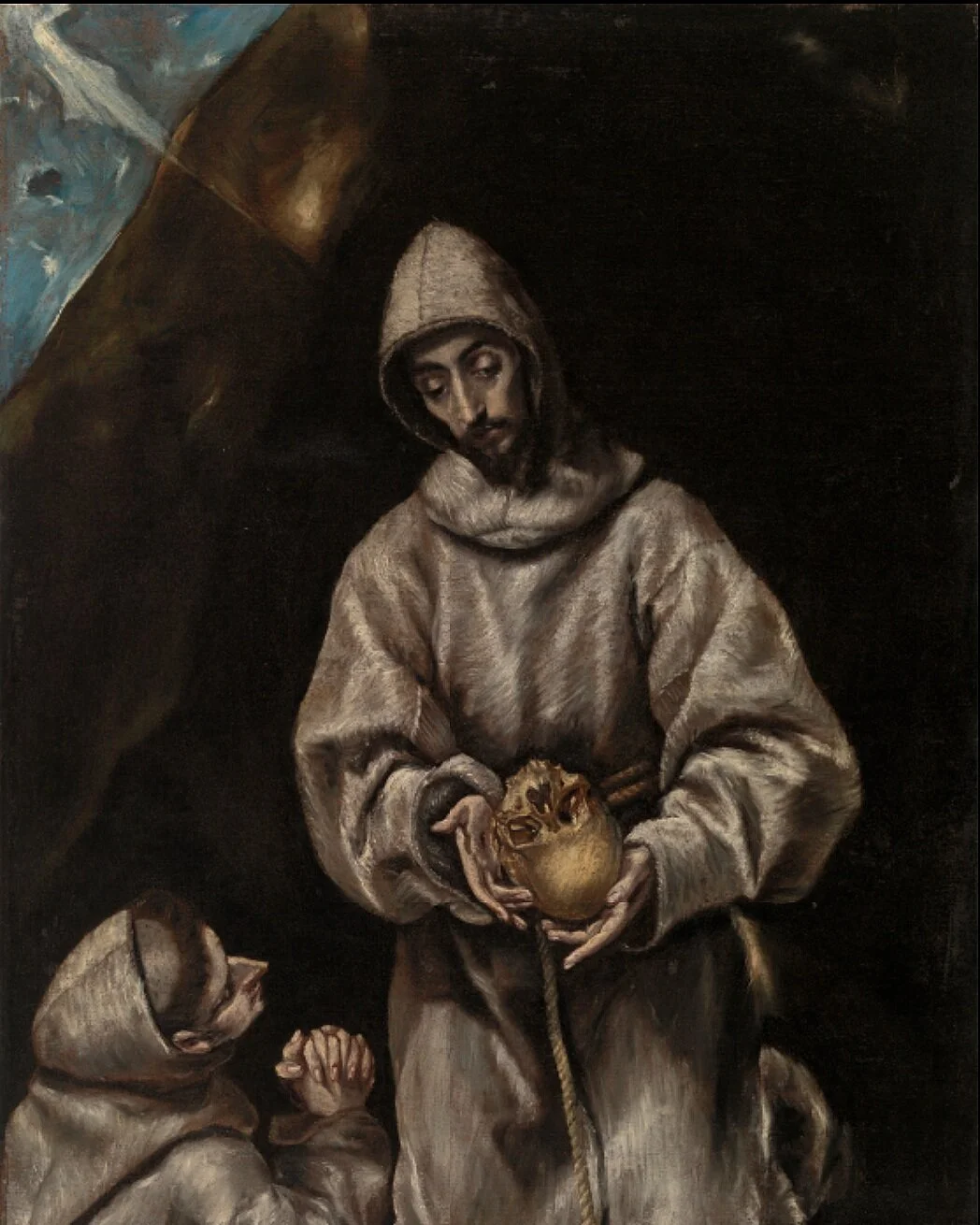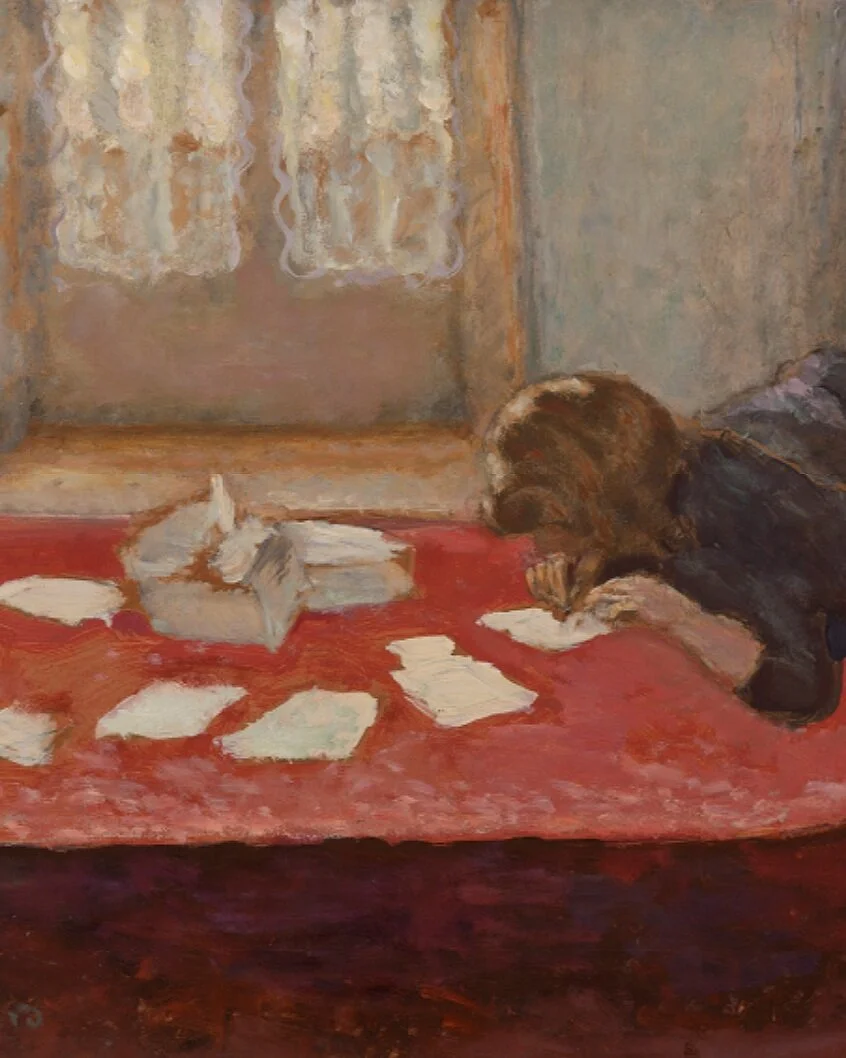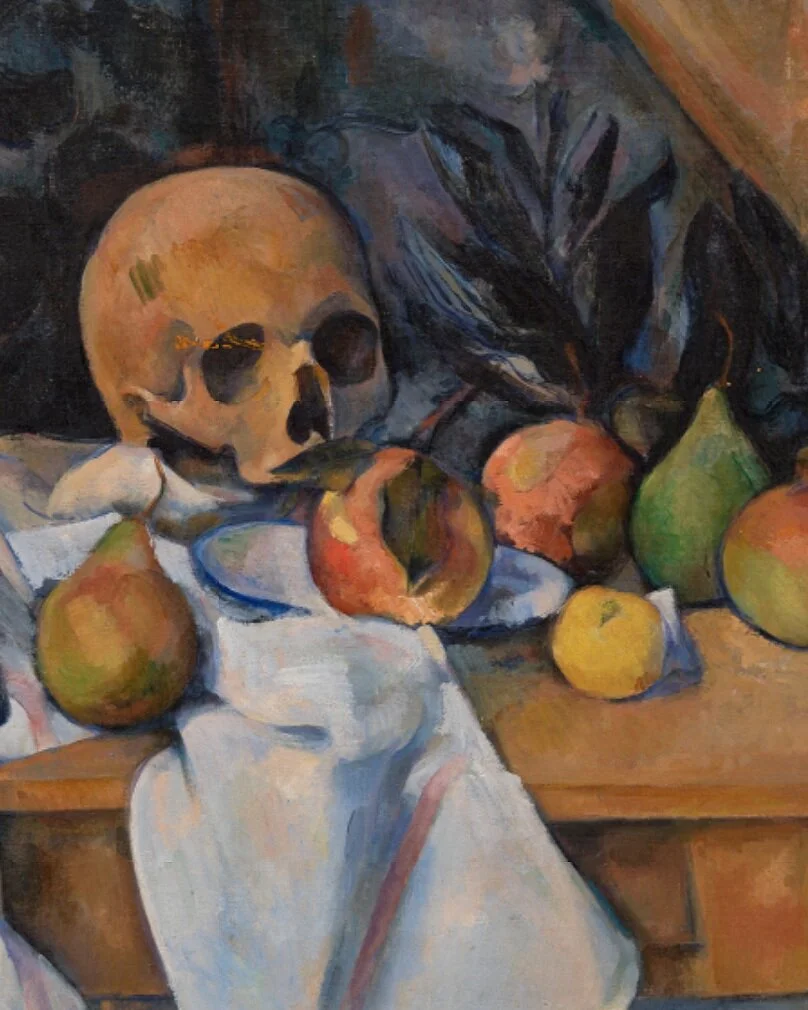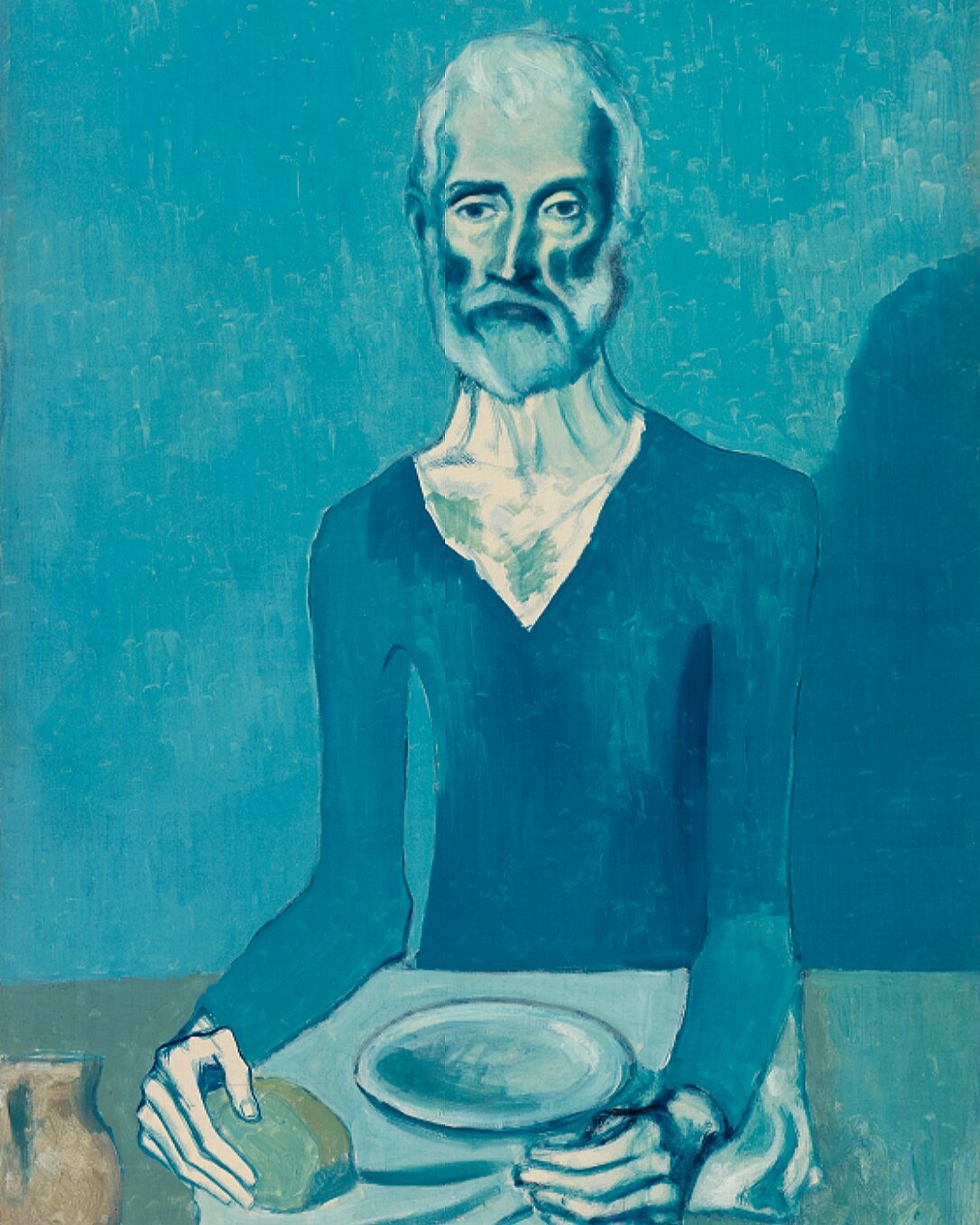Rx 20 / Saint Francis
Where there is doubt, let me bring faith.
Where there is despair, let me bring hope.
Where there is darkness, let me bring light.-prayer of saint francis of assisi
This devotional aid was produced by El Greco (1541–1614) in his Toledo workshop as part of a series of replicas destined for use in convent cells or private chapels. A revered thirteenth-century religious icon lauded for reducing the time of souls in purgatory, Saint Francis (1181–1226) was the preferred subject of El Greco’s devotional paintings. Of his thirteen variations on Saint Francis, four of them include friend Brother Leo as a companion.
Here, Saint Francis kneels at the entrance to a cave, meditating on a human skull while Brother Leo clasps his hands in prayer. The figures are luminous against an otherwise monotone palette. Cloaked in heavy robes, the pronounced drapery with its multiple folds and creases adds weight and volume to the figures’ otherwise delicate frames. Symbols of mortality and redemption are ever-present: hands bear the mark of crucifixion, finely tapered fingers gently cradle a barren skull. The painting is a juxtaposition, if not a reconciliation, of dualities—light and dark, life and death, absolution and despair.
Born Doménikos Theotokópoulos in Crete, El Greco spent his career as an outsider, working first in Venice then Rome before finally settling in the Iberian Peninsula. Byzantine iconography and Greek Orthodoxy, the Italian Renaissance and Spanish mysticism—these traditions are simultaneously present in nearly all of his works. Perhaps this cultural pluralism explains El Greco’s grappling with the notion of identity and in finding an equilibrium between influence and individualism. Like Saint Francis ascending from mortal constraints, he, too, found himself at the intersection of two existences, uncertain if he belonged to either.
reflections…
The visual dualities seen in Saint Francis echo the inherent polarities of clinical care. In an essay published in Academic Medicine, Parul Sud, MD, explores reconciling tensions between confidence and fallibility in medicine. He writes: “We live much of our lives under a duality of emotions—failure and success, diffidence and confidence, despair and elation. . . . Hubris and humility are constantly at odds. Sometimes, it feels like the patient you work the hardest to save slips away, while the one you least expect to survive defeats the odds and walks away. Yet, somehow, we feel responsible for both patients.” He then asks: “Is this duality a rite of passage or a yoke we must bear?”
In other words, clinicians encounter tragedy and triumph, sometimes in rapid succession. How can we maintain emotional equilibrium in the face of radically polarizing patient outcomes? How can physicians offer emotional support and empathy to suffering patients while maintaining a degree of detachment for self-preservation? How might the medical humanities facilitate critical dialogue centered on the sharing of success and failures, anxiety and uncertainty, fear and shame?
We can assume the location depicted in El Greco’s painting to be Eremo delle Carceri, the cave in Assisi that Saint Francis is thought to have turned to for hermetic reflection in the thirteenth century. For Francis and other friars, the cave was both a site of cathartic prayer and a kind of isolating prison, as its name suggests.
In what ways can we understand the hospital as a kind of cave? For many patients and providers, the hospital similarly equates to withdrawal from society—a place that is neither public nor private, where alternatively difficult, intimate, and exuberant experiences take hold. For doctors in particular, how do the cave-like confines of the hospital symbolize a hermetic-like commitment to a life of devotion and even solitude, at times? If the hospital is a site of grief and loss, how can it also be—as it was for Saint Francis—a site of existential reflection and, perhaps, clarity?
sources
“El Greco Audio Tour.” The Art Institute of Chicago, www.artic.edu/highlights/17/el-greco-audio-tour.
Firestone, Chaz. “On the Origin and Status of the ‘El Greco Fallacy.’” Perception, vol. 42, no. 6, 2013, pp. 672–674., doi:10.1068/p7488.
Jones, Jonathan. “The Reluctant Disciple.” Guardian News and Media, The Guardian, 24 Jan. 2004, www.theguardian.com/culture/2004/jan/24/1.
Kientz, Guillaume. “Exhibition El Greco.” Exhibition - El Greco , Louvre Museum - Paris, 9 Aug. 2019, www.louvre.fr/en/expositions/el-greco.
Smee, Sebastian. Compassion. Claustrophobia. Originality. Why El Greco Inspired so Many Great Modern Artists. The Washington Post, 27 Mar. 2020, www.washingtonpost.com/entertainment/museums/compassion-claustrophobia-originality-why-el-greco-inspired-so-many-great-modern-artists/2020/03/25/97a469ae-6d39-11ea-aa80-c2470c6b2034_story.html.
Sud, Parul MD Duality, Academic Medicine: March 2019 - Volume 94 - Issue 3 - p 345, doi: 10.1097/ACM.0000000000002541.
Sweeney, Gina. “El Greco: The Long Search to Find His Voice.” Perspectives, Art Institute Chicago, 25 Mar. 2020, www.theguardian.com/culture/2004/jan/24/1.







